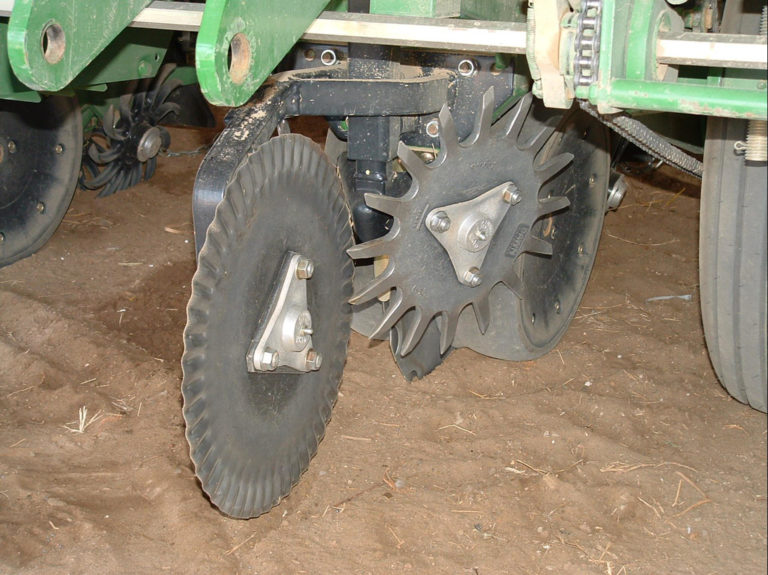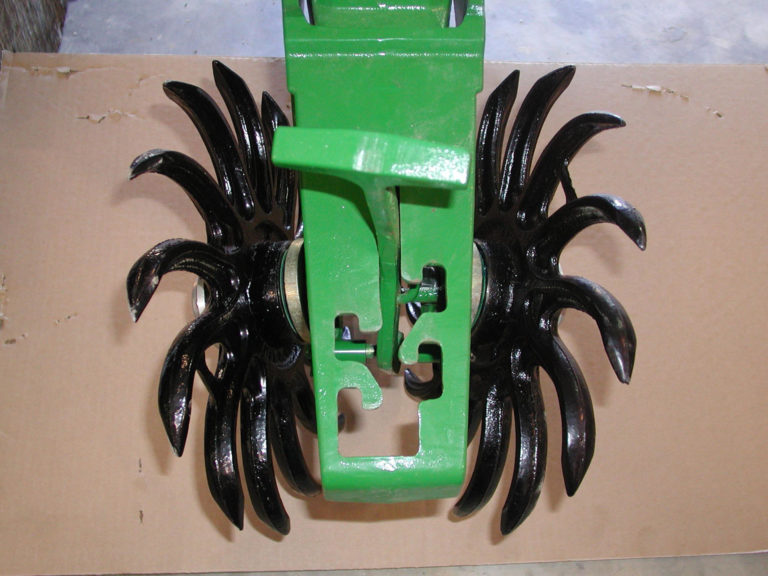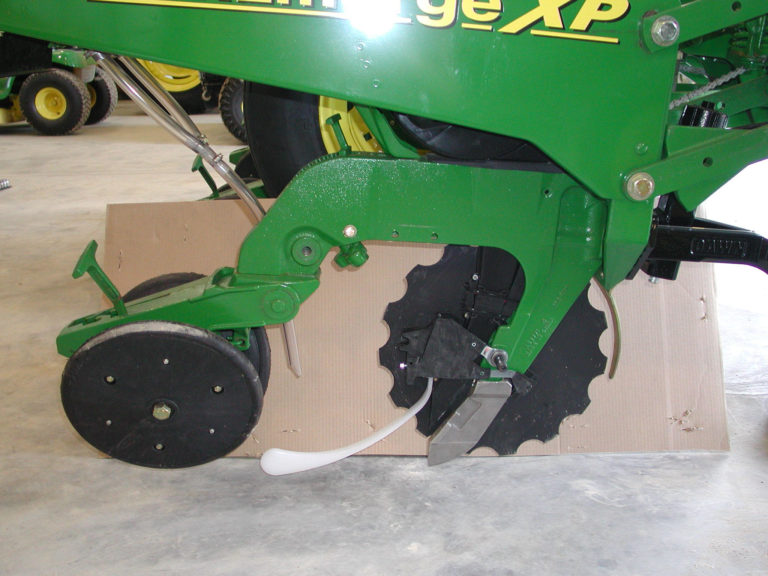The objective when no-till planting in cover crop residues is adequate seed-to-soil contact at a desired seeding depth. Planters designed for operation in residues are heavier than conventional planters. The additional weight allows the planter to maintain the desired seeding depth in rough soil conditions and prevents the planter from floating across the soil surface, which results in uneven seed placement. Individual planter row units are typically equipped with heavy-duty down-pressure springs to maintain seeding depth in uneven soil conditions. In extreme cases, additional weight can be added directly to the planter.
Row cleaners sweep residue away from the opening disks of the planter units. They are useful when planting in heavy cover crop residue. There are different types of row cleaners for different types of planters (Figure 9.13).
Removing residue near the row reduces the chance of hairpinning. Adjust row cleaners to move residue without digging into the soil. If too much soil is disturbed, it will dry out and may crust over, which hinders emergence. In addition, disturbed soil can promote weed emergence in the row. Setting row cleaners too deep will cause residue to wrap around the row cleaners, which affects planting depth and seed coverage. Position row cleaners so that they rotate and “brush” residue away from the seed furrow.
When growing cotton after rye in a no-till system, the best cotton stand is obtained by rolling/crimping parallel to the cotton rows and using a row cleaner, either DawnTM or YetterTM. Rolling/crimping parallel to the row reduces accumulation of residue on the row cleaner as well as the time needed to clean the row cleaners. Cotton can be successfully planted into standing rye as long as row cleaners are used and rye is less than 3 feet tall with less than 1.2 tons per acre of dry biomass. If rye less than 3 feet tall is rolled/crimped, no row cleaners are needed for successful planting. Rolling/crimping is required when the rye height exceeds 4 feet.
Spoked closing wheels (Figure 9.14) can be helpful in poorly drained or fine-textured soils. They crumble the seed trench closed, which improves seed-to-soil contact and leaves the soil loose and friable for plant emergence. Traditional cast iron or smooth rubber closing wheels used on these soils can result in soil crusting that will hinder emergence. Spoked closing wheels can throw seed out of the soil, especially when planting depth is shallow. This usually occurs if the planter is running too fast, and the easiest solution is to slow down.
Additional planter attachments to ensure adequate seed-to-soil contact in rough soil conditions include V-slice inserts and seed firmers (Figure 9.15). V-slice inserts clean the seed trench created by the opening disks. Seed firmers press the seed into the soil at the bottom of the seed trench. These attachments result in additional costs but are cost effective in poorly drained or fine-textured soil.
Important note: Soil type, soil moisture, equipment condition and equipment settings affect the success of no-till planting. Select and set up equipment for existing field conditions and to combine field operations such as subsoiling and planting. Combining operations saves fuel and time but requires a high level of management and experience.



